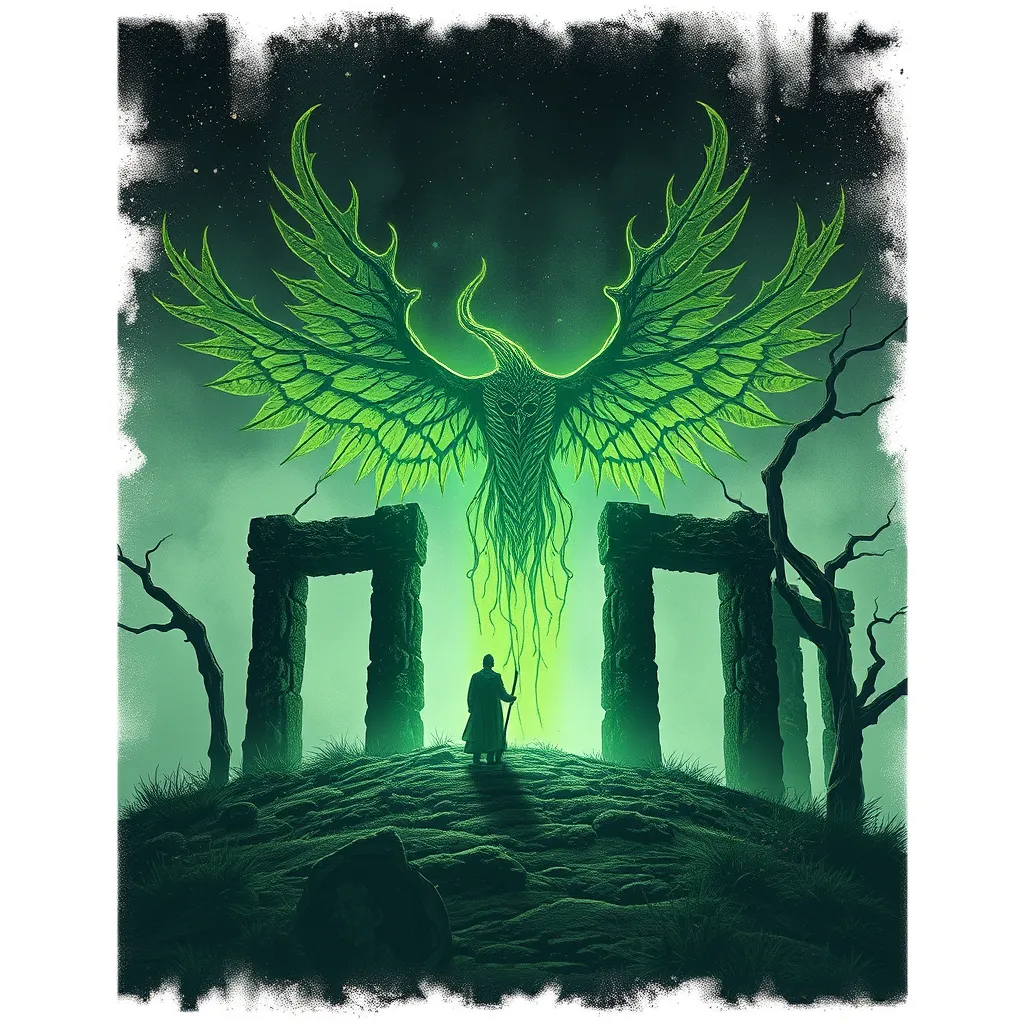The Naga’s Curse: The Consequences of Disrespecting the Serpent Deities
I. Introduction
Naga mythology is a rich tapestry woven from ancient beliefs and cultural traditions, primarily found in South and Southeast Asia. The Naga, often depicted as serpent deities, hold significant spiritual and cultural value, representing fertility, water, and protection. They are revered as guardians of treasures and the underworld, embodying both creation and destruction.
The term “Naga’s Curse” refers to the misfortunes and calamities believed to befall those who disrespect or disregard the Naga deities. This curse serves as a cautionary tale, highlighting the importance of honoring these revered beings. Understanding the cultural context and the beliefs surrounding the Naga is crucial for appreciating their significance in various societies.
II. The Origin of Naga Mythology
The worship of Nagas can be traced back to ancient times, with historical roots found in various cultures, including Hinduism, Buddhism, and indigenous tribal beliefs. In India, the Naga is often associated with the Ganges River and is considered a protector of water bodies. Similarly, in Southeast Asian cultures, Nagas are prominent in folklore and are frequently depicted in temple art.
As symbols of fertility, water, and protection, Nagas are believed to control rain and agricultural abundance. They are often invoked in rituals related to agriculture, ensuring bountiful harvests and the well-being of communities.
Numerous legends and stories surround Naga deities, such as the tale of Vasuki, the serpent king who played a pivotal role in the churning of the ocean to obtain the nectar of immortality, and the story of the Naga princess who fell in love with a human prince, showcasing the intertwining of human and divine realms.
III. The Role of Naga in Spiritual Practices
Naga worship involves a variety of rituals and offerings aimed at appeasing these powerful deities. Common practices include:
- Offering fruits, flowers, and rice at sacred sites and water bodies.
- Conducting ceremonies during festivals, such as Nag Panchami, where devotees pay homage to the Nagas.
- Building Naga shrines and temples as places of worship and reverence.
Respect and reverence are paramount in Naga worship. It is believed that improper rituals or disrespecting the Naga can lead to dire consequences, including natural disasters or personal misfortunes. The spiritual significance of Nagas extends to local communities, where they are seen as protectors and benefactors, ensuring harmony and prosperity.
IV. Understanding the Naga’s Curse
The “Naga’s Curse” can be interpreted in various ways across different cultures. Generally, it encompasses the idea of punishment or misfortune that befalls individuals who disrespect the Naga. Common themes associated with the curse include:
- Natural disasters, such as floods or droughts, interpreted as the Naga’s wrath.
- Personal misfortunes, including illness or financial loss.
- Loss of fertility or agricultural failure, impacting livelihoods.
Anecdotes and folklore illustrate the consequences of disrespecting the Naga. For instance, stories abound of individuals who, upon neglecting their rituals, faced sudden misfortunes or witnessed the drying up of local water sources.
V. Historical Cases of Disrespecting the Naga
Throughout history, there have been documented incidents where disrespecting the Naga led to misfortune. For example, in some regions, the construction of buildings near sacred water bodies without proper ceremonies has resulted in floods or other calamities, interpreted as a direct consequence of angering the Naga.
Cultural responses to these events often involve increased rituals and community gatherings to appease the Naga and seek forgiveness. These incidents serve as cautionary tales, reinforcing the importance of respecting local traditions and beliefs.
VI. Modern Interpretations and Misunderstandings
The impact of globalization has led to various interpretations and misunderstandings of traditional beliefs surrounding the Naga. In contemporary media, Naga symbolism is often misrepresented, leading to a dilution of its cultural significance. This can result in:
- Commercial exploitation of Naga imagery in fashion and art.
- Misinterpretation of Naga stories and symbols in popular culture, often stripping them of their spiritual context.
- A general lack of awareness about the deeper cultural meanings behind Naga worship.
Recognizing the importance of cultural sensitivity is essential in understanding Naga mythology and preserving its significance in the modern world.
VII. Preventing the Naga’s Curse: Guidelines for Respect
To honor the Naga deities and prevent the so-called “Naga’s Curse,” individuals and communities can adopt several recommended practices:
- Engage in regular rituals and offerings at Naga shrines and sacred sites.
- Educate oneself and others about the cultural significance of the Naga in local traditions.
- Participate in community initiatives aimed at preserving Naga traditions and promoting cultural heritage.
The role of education in fostering respect for cultural beliefs cannot be overstated. Schools and community organizations can play a vital role in promoting awareness and understanding of Naga mythology and its importance to local culture.
VIII. Conclusion
Respecting serpent deities like the Naga is crucial in understanding their significance within various cultures. The consequences of disrespect, often articulated through the lens of the “Naga’s Curse,” serve as a reminder of the deep connections between humanity and the divine.
As global citizens, we are called to engage with and appreciate cultural diversity, recognizing the value of traditions that may differ from our own. In doing so, we help preserve the enduring legacy of the Naga’s Curse and ensure that these ancient beliefs continue to be honored in the modern world.



